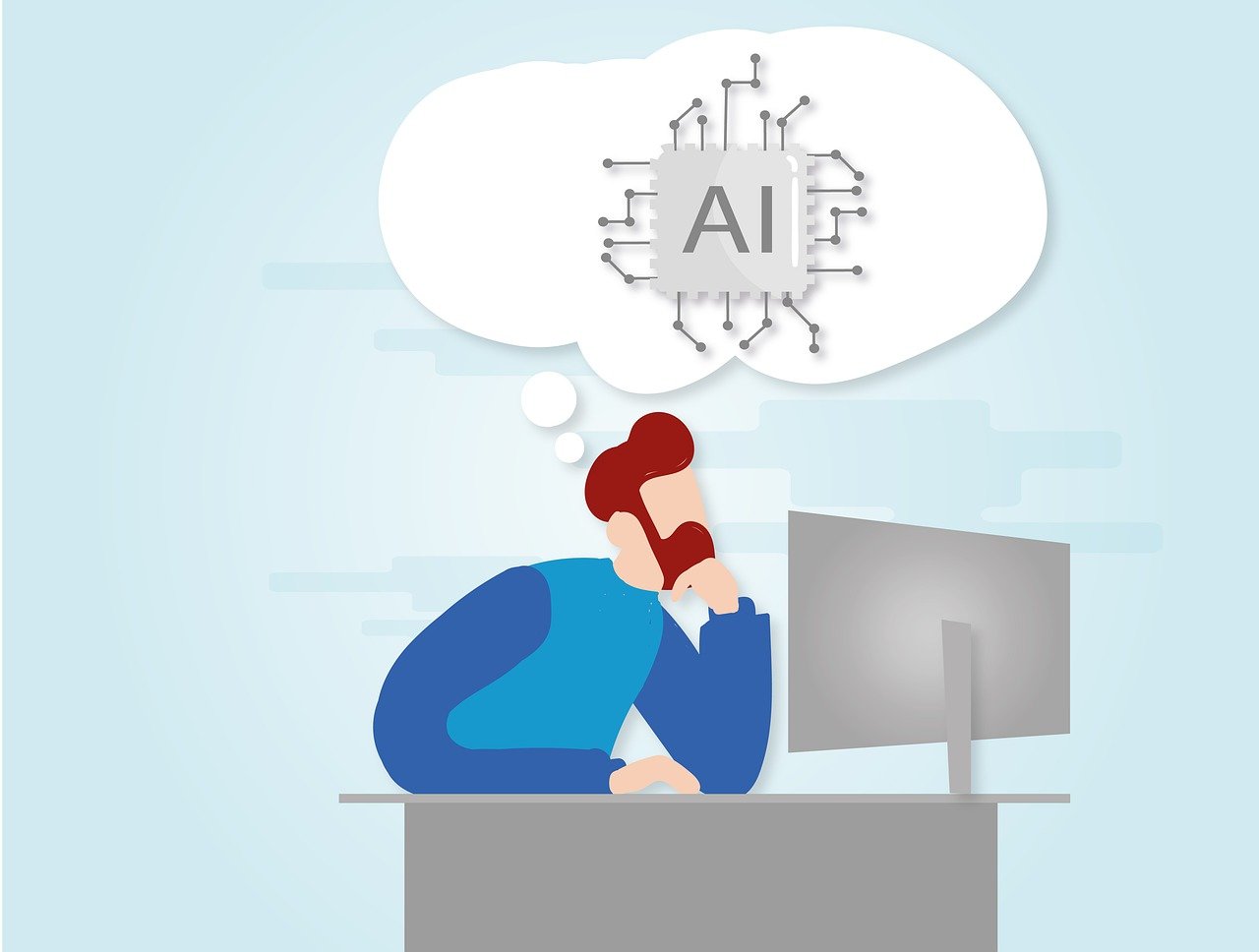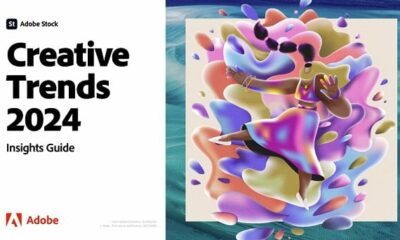NEWS
Adobe rearchitects its CDP: Wednesday’s daily brief
Marketing Land’s daily brief features daily insights, news, tips, and essential bits of wisdom for today’s digital marketer. If you would like to read this before the rest of the internet does, sign up here to get it delivered to your inbox daily.
Good morning, Marketers, and digital keeps everything running.
But for how long? Let me explain. I was struck by a comment from Adobe CEO Shantanu Narayen to the effect that digital capabilities kept the economy running over the last year. There may be an element of hyperbole there, but it seems essentially true.
I’ll go further. Digital kept everything running, not only in our work lives but in every other sphere, from shopping to entertainment. It even kept human relationships running, beyond the immediate circle of the household.
The first two stories below raise the question of whether everything — everything — will revolve around digital in the future. Based on our Events Participation Index, marketers are just about ready to meet in person again early next year; but a thunderous majority want the chance to attend inexpensive, easy-on-travel virtual events too.
And Adobe, of course, is betting that the huge boost to digital we’ve seen in B2C and B2B customer journeys will be sustained. Will it, or will we go back to our old ways? We are setting out on a fascinating journey.
Kim Davis
Editorial Director
In-person events for marketers may be back in early 2022
The majority of marketers are ready to come back to in-person conferences by the start of 2022. But improvements in virtual conferences and lingering uneasiness about the pandemic will likely mean smaller shows at the outset. The data derives from the March edition of the Events Participation Index survey, which we have fielded regularly since the beginning of the pandemic.
About 38% of the nearly 250 marketers we surveyed in March said it is extremely likely that they will attend an in-person show in the first half of 2022, while about 45% gave the prospect a moderate to somewhat likely possibility. The numbers shrink as you get closer to the present, with only 21% saying it is extremely likely they would attend in-person events in the fourth quarter of 2021 and an even smaller 17% saying it is extremely likely they’d attend in the third quarter.
The COVID-19 pandemic gave new life to digital events. The pivot from in-person also equalized experiences, as major trade shows and smaller regional conferences were generally reduced to video-based education and networking. It’s a medium that found an audience out of necessity, and it’s likely to stick around.
About 92% of marketers who took our survey said organizers should keep offering virtual events even when in-person events return. And the reasons are not surprising. Most cited the ability to attend more events and to more easily integrate them into their schedules. Others cited safety during the pandemic and the lesser environmental impact of digital shows. But most often respondents cited the expense.
Privacy-based changes to Adobe’s Real-Time CDP
“It is digital that has kept the economy running,” said Adobe CEO Shantanu Narayen before unveiling a series of product announcements at Adobe Summit yesterday. Unexpectedly, Adobe announced the launch of the next generation of its Real-Time CDP. The CDP, which has been generally available since Q1 2019, has been re-architected for first-party data-driven customer acquisition. The changes come in open acknowledgment of the altered consumer privacy landscape and the deprecation of third-party cookies.
The result is intended to be personalized experiences based only on data the customer has chosen to share, but Adobe is also providing Segment Match capabilities, allowing brands with common interests to share non-sensitive segment data in order to expand their reach (for example, a kitchen equipment retailer might enter a segment-matching partnership with a recipe publisher or ingredient supplier). Adobe also announced a B2B edition of the Real-Time CDP, expected to be available in summer, 2021.
Adobe Workfront is now integrated in the application layer of Adobe Experience Cloud, providing advanced marketing workflow capabilities and supporting what Adobe is calling a marketing system of record — a unified solution for sharing ideas, managing content creation and automating complex marketing processes.
Why we care. Although Salesforce continues to lead the CRM market by a league, Adobe remains one of the most significant other players. It was the first marketing cloud, and it is today arguably the most complete customer experience suite (it provides digital asset management and CMS — including headless CMS — capabilities, which Salesforce does not. Holding its main conference early in the season provides it with an opportunity to set the agenda: we’re waiting to see whether Oracle, Salesforce and SAP will make privacy-based changes to their CDPs.
Will Apple’s App Tracking Transparency change the game for advertisers?
It’s been about ten months since Apple first announced that apps will have to seek explicit consent from users if they want to track their activity across other apps and websites, but App Tracking Transparency has finally launched as part of iOS 14.5.
You may recall that Facebook decried the new feature, even going as far as to take out ads in The Washington Post, The New York Times and The Wall Street Journal stating that it was taking a stand against Apple on behalf of “small businesses everywhere.” It’s easy to see that Facebook is downplaying how Apple’s change affects its own business, but many small businesses do rely on personalized ads to reach audiences.
iPhones accounted for 62% of all domestic ad impressions on Facebook, Instagram, Messenger and the Audience Network in March (up from 56% compared to the year prior), according to Tinuiti’s Q1 2021 Facebook Ads Benchmark Report. Android, on the other hand, accounted for 29%, which is actually a slight decrease from what it was in March 2020.
Why we care. This discrepancy highlights the potential impact that App Tracking Transparency may have. “With Apple devices accounting for such a large share of ad impressions, it will be crucial for advertisers to quickly adapt to the new state of campaign optimization and management to succeed moving forward,” a representative for Tinuiti commented.
Quote of the day
“Throughout the pandemic, we saw a disproportionately adverse impact on women’s careers. In parallel, women-led startups received just 2.3% of VC Funding in 2020 and Publicist was one of them. This wasn’t just part of an overall decrease in VC funding. In 2019, 2.8% of funding went to women-led startups.” Lara Vandenberg, founder and CEO, Publicist
Author
Kim Davis is the Editorial Director of MarTech Today. Born in London, but a New Yorker for over two decades, Kim started covering enterprise software ten years ago. His experience encompasses SaaS for the enterprise, digital- ad data-driven urban planning, and applications of SaaS, digital technology, and data in the marketing space.
NEWS
OpenAI Introduces Fine-Tuning for GPT-4 and Enabling Customized AI Models

OpenAI has today announced the release of fine-tuning capabilities for its flagship GPT-4 large language model, marking a significant milestone in the AI landscape. This new functionality empowers developers to create tailored versions of GPT-4 to suit specialized use cases, enhancing the model’s utility across various industries.
Fine-tuning has long been a desired feature for developers who require more control over AI behavior, and with this update, OpenAI delivers on that demand. The ability to fine-tune GPT-4 allows businesses and developers to refine the model’s responses to better align with specific requirements, whether for customer service, content generation, technical support, or other unique applications.
Why Fine-Tuning Matters
GPT-4 is a very flexible model that can handle many different tasks. However, some businesses and developers need more specialized AI that matches their specific language, style, and needs. Fine-tuning helps with this by letting them adjust GPT-4 using custom data. For example, companies can train a fine-tuned model to keep a consistent brand tone or focus on industry-specific language.
Fine-tuning also offers improvements in areas like response accuracy and context comprehension. For use cases where nuanced understanding or specialized knowledge is crucial, this can be a game-changer. Models can be taught to better grasp intricate details, improving their effectiveness in sectors such as legal analysis, medical advice, or technical writing.
Key Features of GPT-4 Fine-Tuning
The fine-tuning process leverages OpenAI’s established tools, but now it is optimized for GPT-4’s advanced architecture. Notable features include:
- Enhanced Customization: Developers can precisely influence the model’s behavior and knowledge base.
- Consistency in Output: Fine-tuned models can be made to maintain consistent formatting, tone, or responses, essential for professional applications.
- Higher Efficiency: Compared to training models from scratch, fine-tuning GPT-4 allows organizations to deploy sophisticated AI with reduced time and computational cost.
Additionally, OpenAI has emphasized ease of use with this feature. The fine-tuning workflow is designed to be accessible even to teams with limited AI experience, reducing barriers to customization. For more advanced users, OpenAI provides granular control options to achieve highly specialized outputs.
Implications for the Future
The launch of fine-tuning capabilities for GPT-4 signals a broader shift toward more user-centric AI development. As businesses increasingly adopt AI, the demand for models that can cater to specific business needs, without compromising on performance, will continue to grow. OpenAI’s move positions GPT-4 as a flexible and adaptable tool that can be refined to deliver optimal value in any given scenario.
By offering fine-tuning, OpenAI not only enhances GPT-4’s appeal but also reinforces the model’s role as a leading AI solution across diverse sectors. From startups seeking to automate niche tasks to large enterprises looking to scale intelligent systems, GPT-4’s fine-tuning capability provides a powerful resource for driving innovation.
OpenAI announced that fine-tuning GPT-4o will cost $25 for every million tokens used during training. After the model is set up, it will cost $3.75 per million input tokens and $15 per million output tokens. To help developers get started, OpenAI is offering 1 million free training tokens per day for GPT-4o and 2 million free tokens per day for GPT-4o mini until September 23. This makes it easier for developers to try out the fine-tuning service.
As AI continues to evolve, OpenAI’s focus on customization and adaptability with GPT-4 represents a critical step in making advanced AI accessible, scalable, and more aligned with real-world applications. This new capability is expected to accelerate the adoption of AI across industries, creating a new wave of AI-driven solutions tailored to specific challenges and opportunities.
This Week in Search News: Simple and Easy-to-Read Update

Here’s what happened in the world of Google and search engines this week:
1. Google’s June 2024 Spam Update
Google finished rolling out its June 2024 spam update over a period of seven days. This update aims to reduce spammy content in search results.
2. Changes to Google Search Interface
Google has removed the continuous scroll feature for search results. Instead, it’s back to the old system of pages.
3. New Features and Tests
- Link Cards: Google is testing link cards at the top of AI-generated overviews.
- Health Overviews: There are more AI-generated health overviews showing up in search results.
- Local Panels: Google is testing AI overviews in local information panels.
4. Search Rankings and Quality
- Improving Rankings: Google said it can improve its search ranking system but will only do so on a large scale.
- Measuring Quality: Google’s Elizabeth Tucker shared how they measure search quality.
5. Advice for Content Creators
- Brand Names in Reviews: Google advises not to avoid mentioning brand names in review content.
- Fixing 404 Pages: Google explained when it’s important to fix 404 error pages.
6. New Search Features in Google Chrome
Google Chrome for mobile devices has added several new search features to enhance user experience.
7. New Tests and Features in Google Search
- Credit Card Widget: Google is testing a new widget for credit card information in search results.
- Sliding Search Results: When making a new search query, the results might slide to the right.
8. Bing’s New Feature
Bing is now using AI to write “People Also Ask” questions in search results.
9. Local Search Ranking Factors
Menu items and popular times might be factors that influence local search rankings on Google.
10. Google Ads Updates
- Query Matching and Brand Controls: Google Ads updated its query matching and brand controls, and advertisers are happy with these changes.
- Lead Credits: Google will automate lead credits for Local Service Ads. Google says this is a good change, but some advertisers are worried.
- tROAS Insights Box: Google Ads is testing a new insights box for tROAS (Target Return on Ad Spend) in Performance Max and Standard Shopping campaigns.
- WordPress Tag Code: There is a new conversion code for Google Ads on WordPress sites.
These updates highlight how Google and other search engines are continuously evolving to improve user experience and provide better advertising tools.
Facebook Faces Yet Another Outage: Platform Encounters Technical Issues Again

Uppdated: It seems that today’s issues with Facebook haven’t affected as many users as the last time. A smaller group of people appears to be impacted this time around, which is a relief compared to the larger incident before. Nevertheless, it’s still frustrating for those affected, and hopefully, the issues will be resolved soon by the Facebook team.
Facebook had another problem today (March 20, 2024). According to Downdetector, a website that shows when other websites are not working, many people had trouble using Facebook.
This isn’t the first time Facebook has had issues. Just a little while ago, there was another problem that stopped people from using the site. Today, when people tried to use Facebook, it didn’t work like it should. People couldn’t see their friends’ posts, and sometimes the website wouldn’t even load.
Downdetector, which watches out for problems on websites, showed that lots of people were having trouble with Facebook. People from all over the world said they couldn’t use the site, and they were not happy about it.
When websites like Facebook have problems, it affects a lot of people. It’s not just about not being able to see posts or chat with friends. It can also impact businesses that use Facebook to reach customers.
Since Facebook owns Messenger and Instagram, the problems with Facebook also meant that people had trouble using these apps. It made the situation even more frustrating for many users, who rely on these apps to stay connected with others.
During this recent problem, one thing is obvious: the internet is always changing, and even big websites like Facebook can have problems. While people wait for Facebook to fix the issue, it shows us how easily things online can go wrong. It’s a good reminder that we should have backup plans for staying connected online, just in case something like this happens again.











